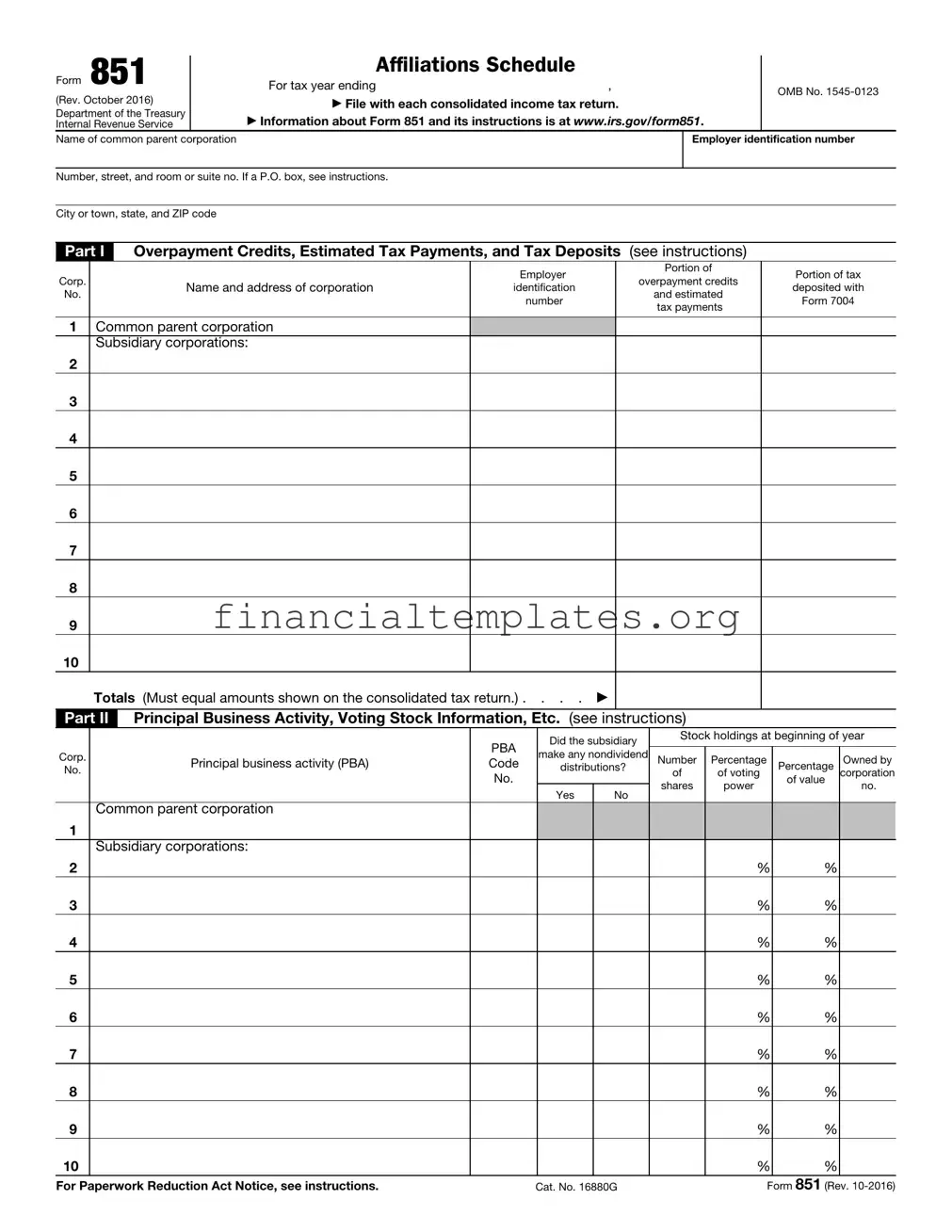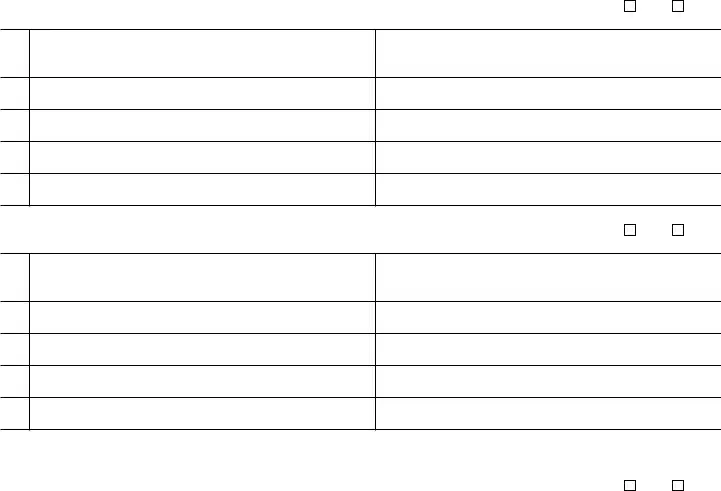The IRS Form 1040, U.S. Individual Income Tax Return, shares similarities with Form 851 in that it is a fundamental document required for filing annual income tax returns, albeit for individuals rather than corporations. Both forms serve as the primary documents for their respective filers, consolidating financial information to comply with U.S. tax laws. While Form 851 consolidates information for an affiliated group of corporations, Form 1040 consolidates an individual's income sources, deductions, and credits to calculate their tax liability.
Form 1120, U.S. Corporation Income Tax Return, is akin to Form 851 because it is used by corporations to report their annual income, gains, losses, deductions, and credits. Both forms are integral in the corporate tax filing process, with Form 851 being specifically for affiliated groups filing consolidated returns. Form 1120 is used by individual corporations to file their standalone tax returns before they are combined into a consolidated return with Form 851.
The Schedule K-1 (Form 1065), Partner's Share of Income, Deductions, Credits, etc., is used to report a partner's share of a partnership's income, deductions, and credits. It is similar to Form 851, as both documents deal with allocating income and financial information among multiple parties. However, while Form 851 deals with the allocation within an affiliated group of corporations, Schedule K-1 focuses on the distribution among partners in a partnership.
The Form 1065, U.S. Return of Partnership Income, relates to Form 851 by serving as the primary document for reporting a partnership's financial information, including income, losses, deductions, and credits. Both forms are used to report collective financial details of a group - Form 851 for an affiliated group of corporations and Form 1065 for partnerships. They are essential for the IRS to assess the proper tax liability based on the combined financial activities of their respective entities.
Similar to Form 851, Form 5471, Information Return of U.S. Persons With Respect to Certain Foreign Corporations, requires detailed financial information disclosure from filers. While Form 851 is concerned with domestic affiliated groups' financial information and stock ownership, Form 5471 captures a U.S. person's ownership in foreign corporations, showcasing the global nature of tax reporting. Both forms ensure compliance and transparency in the financial activities of business entities.
Form 1120-S, U.S. Income Tax Return for an S Corporation, parallels Form 851 as it's used by S corporations to report their annual tax return information. While Form 1120-S serves S corporations specifically, providing details on income, losses, deductions, credits, and tax liability, Form 851 serves to compile similar information for an affiliated group of corporations filing consolidated returns. Both are critical in their respective spheres for the accurate reporting of business income to the IRS.
Form 8865, Return of U.S. Persons With Respect to Certain Foreign Partnerships, has similarities with Form 851 regarding the reporting structure and requirement for disclosing transactions and financial standings. Form 851 focuses on domestic affiliated corporate groups, while Form 8865 is intended for reporting interests in foreign partnerships, yet both exist to ensure transparency and compliance in international and domestic financial dealings.
Form 8832, Entity Classification Election, resembles Form 851 in that it involves choices about the tax treatment of entities. While Form 8832 allows an entity to choose how it will be classified for federal tax purposes (such as an S corporation, C corporation, partnership, or disregarded entity), Form 851 is utilized by corporations choosing to file consolidated tax returns as an affiliated group. Both forms reflect the IRS's requirement for clarity on the tax status and reporting methods of business entities.
Finally, Form 7004, Application for Automatic Extension of Time To File Certain Business Income Tax, Information, and Other Returns, while not a tax return form itself, is related to Form 851 in its role in the tax filing process. Form 7004 is used to request extensions for filing tax returns, including those of corporations that might later file Form 851 as part of their consolidated tax returns. This link underscores the integrated nature of tax administration and compliance, providing flexibility in the corporate tax filing calendar.




